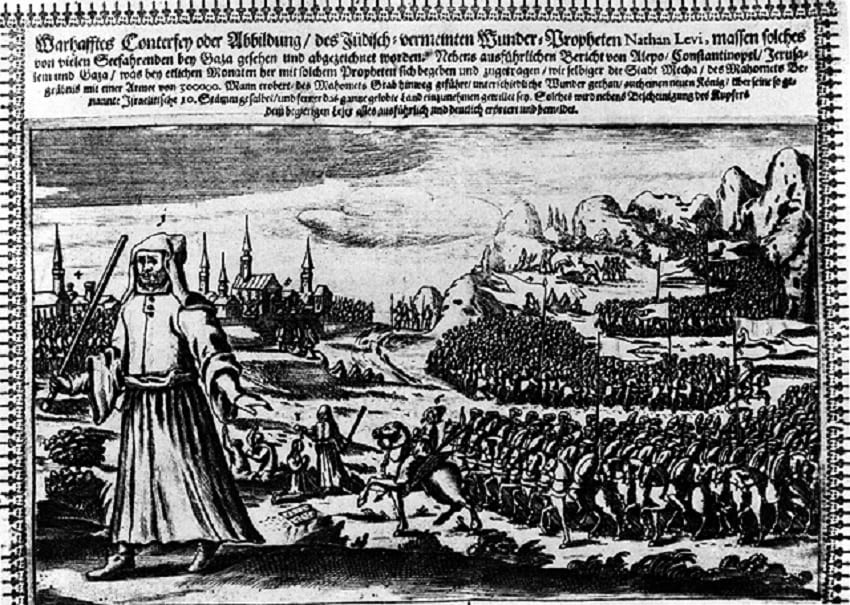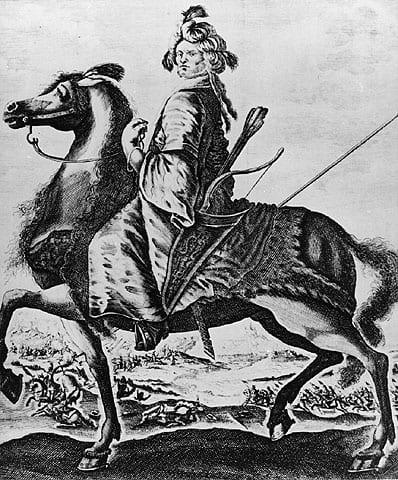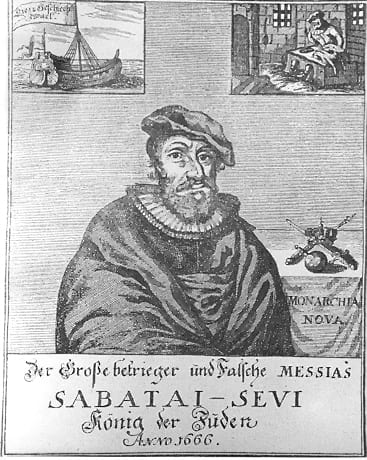That Gaza is a hotbed of fundamentalist religion is nothing new. Throughout history, the city has attracted zealous believers, inflamed with high-voltage messianism and a burning passion to save humanity from its earthly suffering. From the time of Samson – who uprooted the gates of the Philistine city in a fit of sacred rage – to Yahya Sinwar and Muhammad Deif, who strive in the name of jihad to turn the whole world into Dar al-Harb.
Messianism and zealotry are certainly not foreign to any religion, and Judaism also had its share of would-be messiahs, false prophets and eccentrics who offered their flocks a direct connection to the Shehina and free streaming to the holy spirit. We will focus on one of them.

Our story begins with a Jewish youth who lived in Gaza 350 years ago. Nathan of Gaza was considered the founder of the largest messianic Jewish movement in the modern era. Reports indicate that he was considered a real prodigy, well-versed from a young age in the Shas sections of the Mishna and Jewish commentary. Some said that he recited entire tractates by heart in the Beit Hamidrash of Jerusalem’s renowned commentator Rabbi Yaakov Hagiz.
When he was 20, Nathan married the daughter of Shmuel Lisbona, a native Damascene who lived in Gaza. After Nathan married, he packed his bags and moved to Gaza, earning the name Nathan of Gaza. That was a turning point in his awareness. He adhered to an ascetic lifestyle, dabbled in mysticism and Kabbalah, and delved further into the writings of the Ramak, Rabbi Moshe Cordovero, and HaAri Hakadosh Isaac Luria. He was subject at that time to many prophetic visions and reputed to be a miracle worker with a direct line to the holy spirit who could “rectify souls.”
Kabbalah researcher and journalist Dr. Yehuda Yifrach noted in his article for Segula Magazine, “Messianic Mania,” that Nathan of Gaza had rare personal skills: intense concentration and persistence, daring and original religious thought, and eloquent written and verbal expression. Add to that enduring willpower, coherent methodology, and a talent for sticking to a detailed and systematic plan. But his most significant trait was his extraordinary social skill. He was simply a magnet for anyone with whom he came into contact. People who met him felt that “he could read their souls, and they were captivated by his charm” – that there was no escaping his intimate knowledge of them.
He was soon surrounded by a circle of young apostles in Gaza who studied Kabbalah from his lips. A letter from one of them described “The Prophet’s” penchant for preaching the secrets of the holy Zohar to his disciples at the Gaza shore. This jolly club fervently sang the age-old piyyutim liturgical poems of Rabbi Israel ben Moses Najara while dancing ecstatically on the beach.

But all that only paved the way for a meeting that changed Nathan Ghazzati’s life and sparked a tremendous spiritual eruption throughout the Jewish world. From Gaza to Hebron to Jerusalem, it spread like wildfire throughout the Ottoman Empire and the Lithuanian-Polish kingdom. It began when Nathan of Gaza met a bizarre, troubled and manic-depressive Jew with delusions of grandeur on steroids: Shabbetai Zevi.
The story of Shabbetai Zevi has been told. The vision that came to him in 1648, in which an angel from God told him that he was the Messiah and Israel’s Redeemer. His expulsion from the Jewish community in Izmir, the city of his birth, and later expulsions from Salonika and Constantinople – resulting from his performance of erotic ritual and chronic religious provocation. These included his forbidden pronunciation of the Tetragrammaton (the four-letter name of God) in synagogue; an attempt to stop the afternoon sun like Joshua bin Nun, celebration of all three annual festivals (Sukkot, Pesach, and Shavuot) in one week; and a ritual in which he placed an enormous adorned fish in a baby’s cradle to signify that Redemption would come in the sign of Pisces.
Around Purim, 1665, the prophet Nathan of Gaza was privy to his own religious ecstasy accompanied by ongoing visions of the heavenly world. That was when he received the revelation – the supreme enlightenment in “the light of the seven days [of creation]” of Shabbetai Zevi’s messianic mission. During that period, Zevi was living in Egypt and plagued by depression. When he heard of Nathan of Gaza, he packed his belongings and traveled to Gaza in the hope of finding solace for his troubled soul. The last thing he expected was that the famous Kabbalist would declare him the Messiah and King. Zevi was surprised to receive confirmation that his allegedly peculiar and outlandish behavior resulted from a superb soul rooted in the highest aspects of the divine world.

From then on, Nathan of Gaza was Shabbetai Zevi’s right-hand prophet. He wrote, produced, and directed the greatest film about messianic Judaism in the modern era. It opened in Hebron, where Shabbetai Zevi’s “Sabbatean” movement was a megahit. It spread from there to Jerusalem and on to Damascus and Aleppo. The rumor took wing and the buzz surrounding the new messiah grew with his road trips and visits to Jewish communities. Nathan’s missives attended this hysteria and the real euphoria that pervaded Diaspora Jewry.
And what about Gaza? It became an international prophecy hub. Jews thronged to see the prophet who had crowned the messiah. Its courtyards filled with women and men, sleeping in the streets and repeating the corrections and mortifications handed down to them by Nathan of Gaza.
The end is known. When the Turkish Sultan heard of the “Jewish king’s” growing popularity, he made Zevi an offer he couldn’t refuse: death or conversion to Islam. Zevi chose Islam. And the rest is history.
Historian’s cite the Sabbatean movement as the first in a series of Jewish spiritual movements that placed messianism at their ideological center: From Sabbateanism to Hassidism; from Hassidism to Zionism; and from there directly to Gush Emunim and the followers of Rabbi Abraham Isaac Kook, who still consider Gaza the Land of their Fathers.
Conclusion? The messianic message from Gaza at the dawn of the modern era is back in Gaza 350 years later, accompanied by tanks and Red Alerts. Learn how powerful messianism can be. Before the next round.
(Translated by Varda Spiegel)